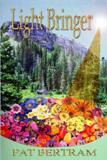Pat Bertram's Blog, page 224
August 25, 2013
It Is What It Is
I talked to a friend today about the various problems we are facing in this, our fourth year of grief, and she said, “It is what it is.”
Robert Hartwell Fiske calls such sayings “quack expressions,” saying they “readily explain behavior that the dimwitted otherwise find inexplicable, and justify attributes that they otherwise find unjustifiable.”
He’s right to a certain extent, and yet . . .
My friend is anything but dimwitted. She, like me, is struggling with life, death, grief, change, and other life experiences that are inexplicable to everyone, dimwitted, brightwitted, or somewhere in between. Sometimes it truly is what it is, quack expression or not.
Desp ite what the positive thinkers and those who believe we create our own reality profess, much of life is beyond our control. We don’t decide who lives and dies. We can’t choose who we love or despise (though we can choose what we do with those feelings). We can’t always help people who need to be helped. We can’t hurry along or slow down natural processes, such as childbirth or old age. Nor can we recreate the world to suit our desires. The sun always rises in the eastern sky and sets in a westerly direction. The moon always affects our world, though myths tell of a time before the moon came to stay. And, as they say, time and tide wait for no man. (Though I suppose, being a woman and not a man, I should be able to sway such natural phenomena.)
ite what the positive thinkers and those who believe we create our own reality profess, much of life is beyond our control. We don’t decide who lives and dies. We can’t choose who we love or despise (though we can choose what we do with those feelings). We can’t always help people who need to be helped. We can’t hurry along or slow down natural processes, such as childbirth or old age. Nor can we recreate the world to suit our desires. The sun always rises in the eastern sky and sets in a westerly direction. The moon always affects our world, though myths tell of a time before the moon came to stay. And, as they say, time and tide wait for no man. (Though I suppose, being a woman and not a man, I should be able to sway such natural phenomena.)
It is what it is.
Lately, I’ve been struggling with a couple of situations that are not of my making, that I have no control over, that don’t affect me in a primary way (besides tearing me apart by conflicted loyalties). I can’t solve any of the problems that have arisen, can’t walk away from them, can’t change anything. All I can do is realize each situation is what it is, and let it go as best as I can. (It helps to realize that in a case of divided loyalties, my loyalties belong to myself.)
In my writing, of course, I stay away from such expressions since I like my writing to have a tinge of elegance, but life is not always elegant.
It is what it is.
***
Pat Bertram is the author of the suspense novels Light Bringer, More Deaths Than One, A Spark of Heavenly Fire, and Daughter Am I. Bertram is also the author of Grief: The Great Yearning, “an exquisite book, wrenching to read, and at the same time full of profound truths.” Connect with Pat on Google+. Like Pat on Facebook.
Tagged: beyond our control, elegant English, grief, it is what it is, quack expressions, Robert Hartwell Fiske


August 24, 2013
Planning a Themed Road Trip
I’ve been meeting some well-traveled people lately, which has made me wonder how I want to approach my cross-country trip when I’m finally free set out. I could simply go where the spirit moves me, but when I’m on a road trip, where the spirit moves me is generally on down the road. I am destination oriented, and even though I always plan to make stops and take things easily, I drive straight through. One reason I seldom stop is road hypnosis. Another reason is that I worry what would happen if the car wouldn’t start on one of those back roads with no cell towers within range. But if it doesn’t matter where I am — because no matter where I am, there I will be — I might be more willing to stop every few miles or so. But without a set destination, I have a hunch I’d become subject to road hypnosis, and just keep on driving.

One possibility to prevent such mindless driving is to plan the trip. Reserve hotels and motels. Be prepared. But the point of an extended trip is to embrace irresponsibility. (At least to a certain extent. I don’t think I would enjoy being completely reckless.) I’ve always been the responsible one, and when my responsibilities end, I need to become free, spontaneous. Capricious, even.
Another possibility is to decide on a theme for the trip. Some people collect lighthouses, going from one to another, filling in their lighthouse passport books. For some reason, lighthouses have never been that important to me. On the other hand, I’ve fallen in love with piers, especially the long wooden pathways built over the ocean without restaurants, rides, and other amusement. So I could make a circuit around the county, hunting piers.
Or Ferris wheels. Or any number of things: haunted houses, caves, waterfalls, oddities like the Winchester Mansion.
If everything else fails, I could simply hope that one day I would get tired of driving and find somewhere interesting to hang out for a while.
If you were to take an extended theme-based trip, what would you do, where would you go?
***
Pat Bertram is the author of the suspense novels Light Bringer, More Deaths Than One, A Spark of Heavenly Fire, and Daughter Am I. Bertram is also the author of Grief: The Great Yearning, “an exquisite book, wrenching to read, and at the same time full of profound truths.” Connect with Pat on Google+. Like Pat on Facebook.
Tagged: embracing irresponsibility, Ferris wheel, lighthouse, piers, plannng a trip, road hypnosis, theme trip


August 23, 2013
Open Sesame!
I had lunch with a friend today, and she asked if I was writing anything, so I told her the story of my grieving woman, one of the two moribund works I’ve been slowly resurrecting.
It was gratifying to see her rapt face as the story unfolded, and her attention gave me a boost of ambition to finish the story. To be honest, though, I don’t need the boost — I’ve been enjoying working/playing with the manuscript.
I say working/playing, because it isn’t work — work connotes toil and energy expended with perhaps a monetary reward at the end, and though I have been working on the book, it hasn’t been work. More like puzzle play. I wrote many of the scenes a few months after my life mate/soul mate died, attempting to deal with my grief and record the pain before I  forgot some of the particulars. It’s been long enough now that the pain is mostly a faint and bewildering memory, so working on the book, even the agonizing scenes, isn’t a hardship.
forgot some of the particulars. It’s been long enough now that the pain is mostly a faint and bewildering memory, so working on the book, even the agonizing scenes, isn’t a hardship.
I started the novel as a NaNoWriMo project to see if I could meet the challenge of 50,000 words in a month. Despite being a slow writer, I did complete the required number of words, though to do so, each day I had to write whatever scene came to mind. I have a stack of scenes that have to be put into some sort of order before I do the difficult scenes, the fill-in sections, the transitions, the descriptions — all the parts that are hard for me to write but need to be included. That could take a while, since I only have about 40,000 words, which falls short of a full novel.
Now, however, I am typing up what I’ve written and trying to put the pieces of the puzzle together. For example, I have a flashback scene that shows her dying husband laboriously filling page after page with what looks like his daughter’s name, and he keeps talking about his “sesame.” (Like my life mate/soul mate, the poor guy is not able to find the correct words to say what he means.)
In another scene, my grieving woman checks his computer to see if she can find his estranged mother’s address so she can notify her of her son’s death, and she comes across a file labeled “journal.” She clicks on the file, curious, because she’d never known him to keep a journal, and finds it password protected. Though she tries all the passwords she’s known him to use, she can’t open the file.
Now here’s the problem — which scene should come first? The sesame flashback or the journal scene? “Sesame” of course, is short for “open sesame,” which is what his poor cancer-addled brain is calling a password, though she doesn’t know that. If the sesame flashback came first, would it be obvious when the journal scene comes around that he’d been trying to figure out the password? If the journal scene comes first, would it be obvious when the sesame flashback comes around that he’d been trying to figure out the password?
Oh, that all my problems should be so insignificantly significant!
***
Pat Bertram is the author of the suspense novels Light Bringer, More Deaths Than One, A Spark of Heavenly Fire, and Daughter Am I. Bertram is also the author of Grief: The Great Yearning, “an exquisite book, wrenching to read, and at the same time full of profound truths.” Connect with Pat on Google+. Like Pat on Facebook.
Tagged: NaNoWriMo, novel about a grieving woman, work vs play, writing as play


August 22, 2013
My Tree Bark Heart
When I lost my life mate/soul mate to inoperable kidney cancer a little more than three years ago, people told me that my shattered heart would heal, and that it would grow back bigger. In this respect, apparently, hearts are like tree trunks. The bark on a tree is where the trunk breaks to allow new growth. So now I have a tree bark heart, but instead of being more receptive to love, I seem to be more receptive to grief. Or maybe the bark hasn’t hardened yet, and the soft, easily hurt trunk is still showing through.
I ’ve been going through a series of upheavals in my life recently, most of which I can’t talk about. One is a family situation and the people involved would be terribly hurt if I were to make the drama public. It’s a sadly inevitable predicament, with roots dating back to my childhood, and it grieves me deeply.
’ve been going through a series of upheavals in my life recently, most of which I can’t talk about. One is a family situation and the people involved would be terribly hurt if I were to make the drama public. It’s a sadly inevitable predicament, with roots dating back to my childhood, and it grieves me deeply.
The other situation has weaker roots since it dates back only a couple of years, but still, it saddens me. I’d agreed to do the online promotion for an internet company in return for a percentage of the profits, and those hopes disappeared this weekend in a series of emails and a cloud of dust as some of the major players decamped, leaving me rootless. I hadn’t realized until it was over how much I needed feeling as if I were part of something, even if it was more hope than reality.
I’ve also lost a couple of friends who have moved beyond me, either into committed relationships or . . . whatever. I still am not sure what is going on with one friend.
When my mate died, I played endless games of computer solitaire. It was a mindless way of passing the time, and I find myself doing that again. Just game after game after game.
Restless. Sad. Lost. Expanding that poor shattered tree bark heart.
***
Pat Bertram is the author of the suspense novels Light Bringer, More Deaths Than One, A Spark of Heavenly Fire, and Daughter Am I. Bertram is also the author of Grief: The Great Yearning, “an exquisite book, wrenching to read, and at the same time full of profound truths.” Follow Pat on Google+. Like Pat on Facebook.
Tagged: broken heart, broken heart grows back bigger, computer solitaire, restlessness


August 21, 2013
Is the Unwitnessed Life Worth Living?
In the movie Shall We Dance, Beverly Clark (Susan Sarandon) says: “We need a witness to our lives. There’s a billion people on the planet . . . I mean, what does any one life really mean? But in a marriage, you’re promising to care about everything. The good things, the bad things, the terrible things, the mundane things . . . all of it, all of the time, every day. You’re saying ‘Your life will not go unnoticed because I will notice it. Your life will not go un-witnessed because I will be your witness.’”
 After the death of my life mate/soul mate, I felt that whatever happened to me in the future wouldn’t matter. He had been the witness to my life. He gave it meaning by that witnessing. During these years of grief, I have used this blog as my witness, writing about all that I have been going through. This witnessing of my grief gave it importance — because of what I have written, I’ve connected with people in a similar situation, and we’ve helped each other get through each new phase of grief.
After the death of my life mate/soul mate, I felt that whatever happened to me in the future wouldn’t matter. He had been the witness to my life. He gave it meaning by that witnessing. During these years of grief, I have used this blog as my witness, writing about all that I have been going through. This witnessing of my grief gave it importance — because of what I have written, I’ve connected with people in a similar situation, and we’ve helped each other get through each new phase of grief.
For all these months (years, now!), I’ve been worried about becoming one of those forgotten old women who lives alone in a dingy apartment, with no one to care about and no one to care about her. It’s not an unusual fear — many women in my situation have the same worries, but we go on with our lives and hope that the fates are kind to us somewhere along the way.
The truth is, even if no one witnesses our life, it still has meaning because each of us witnesses our own live. It has meaning because we live it. That forgotten old woman living in her dingy apartment remembers who she is, who she once was, who she hoped to be. She remembers that she once was loved. She remembers that she once had worth. I only hope she knows she is still important because she still is.
***
Pat Bertram is the author of the suspense novels Light Bringer, More Deaths Than One, A Spark of Heavenly Fire, and Daughter Am I. Bertram is also the author of Grief: The Great Yearning, “an exquisite book, wrenching to read, and at the same time full of profound truths.” Connect with Pat on Google+. Like Pat on Facebook.
Tagged: forgotten old women, marriage, Shall We Dance, Susan Sarandon, witness to our lives


August 20, 2013
Writing: Art vs. Commerce
Ever since the death of my life mate/soul mate, I’ve been struggling to find reasons to write. It didn’t seem important to write another book that would languish in the dark alleys of non-bestsellerdom, and it especially didn’t seem important to write if he, my most avid fan, were no longer here to read what I wrote.
Today, though, I had an epiphany. Writing is separate from selling books. Writing is art, a thing of the spirit, eternal. Selling books is merely commerce, and so is everything that goes along with the business — writing to be read, finding readers, trying to make a niche in the publishing world.
Often, we writers are told that we need to write what people want to read. It’s good advice, especially if we want to make a living as an author, but in my case, I can only write the books I can write. Even if I knew what readers wanted, I couldn’t  write those books. Someone else is already writing them.
write those books. Someone else is already writing them.
Although it would be nice to make a living off writing, money is not the only reason to write. In fact, contrary to popular belief, money is not the reason behind most of what is worth living for.
Take a smile for example. That curvature of the lips and sparkle in the eye is fleeting and ephemeral, not to be stored or purchased anywhere here on this earth, and yet, a smile from a loved one is precious. I would give anything to see my life mate/soul mate smile at me once more, but now his smiles exist only in my memory.
Smiles aren’t the only valuable thing that has no meaning beyond the moment. We go walking on a cool sunshiny day without ever stopping to think what we will get out of it other than a pleasant interlude. We watch a movie or read a book simply to pass the time, without ever worrying about its importance. We talk with friends, and those words become lost in the eternal spectrum of sound waves. Sometimes we talk to a person who is no longer here, such as I do with my lost mate, and as seemingly meaningless as those conversations might be, they are important.
Is writing any different?
Some writers, of course, are so full of their importance they believe their words are immortal, no matter how trite or uninspiring their writing is, but many of us need the possibility of readers to give our writing importance, or at least purpose.
And yet, there is the side of writing that is often ignored in the business of writing — writing is art, or it can be. Art is the expression or application of human creative skill and imagination. Nowhere in that definition does it say art needs readers or viewers or buyers to be art. Art is merely expression. And that is what writing should be.
In a perfect world, writers would never consider their readers, would never put commerce above inspiration, would never count words or the hours spent creating. They would simply write.
For myself, I can create that perfect world
The past few weeks, I have been working a bit on a novel I started three years ago about a grieving woman. Maybe when the book is finished, I will turn the manuscript over to my publisher, but for now, I’m not even considering the commerce of writing. The book is for me — an expression of my grief, inspired by all I’ve gone through the past few years.
My writing.
My art.
***
Pat Bertram is the author of the suspense novels Light Bringer, More Deaths Than One, A Spark of Heavenly Fire, and Daughter Am I. Bertram is also the author of Grief: The Great Yearning, “an exquisite book, wrenching to read, and at the same time full of profound truths.” Connect with Pat on Google+. Like Pat on Facebook.
Tagged: importance of smiles, more precious than gold, smiles, why write, writing as art, writing as business


August 19, 2013
Camping on the Edge of Life
Too often now I feel as if I am camping on the edge of life. To a certain extent, this feeling comes from my current living situation. I am staying with my 96-year-old father to make sure he retains his independence as long as possible, but since his house is fully furnished, that means most of my stuff is in storage. I have my clothes, of course, my computer, my own towels, a few kitchen items, a couple of furniture pieces (such as the table and chair I’m presently using for my desk) — just enough to connect me to the past but not enough to make me feel settled. I won’t be staying here once my father is gone  and that knowledge also keeps me from feeling settled, makes me feel as if I am just camping in. (Rather than camping out.)
and that knowledge also keeps me from feeling settled, makes me feel as if I am just camping in. (Rather than camping out.)
More than that, though, this feeling of camping on the edge of life comes from being single in a coupled world. It’s been three and a third years since the death of my life mate/soul mate, and I’m still not comfortable with his being gone. Despite that, quite inexplicably I’m forgetting that I once shared my life, once loved deeply, once felt as if I lived smack dab in the middle of life. As my grief continues to wane, as I move further from him, it seems as if this is lonely existence is what my life has always been — and it should be enough, but it isn’t. Not yet.
We live in a world where movies, books, songs, videos, shows, ads and commercials all extol the virtue of being in an intimate relationship. Love makes the world go round. You’re nobody till somebody loves you. All you need is love. Love makes you feel complete. Love makes you feel fulfilled. Love makes life worth living.
This constant barrage of coupled love and happily ever after is a sad message for many of us — either we lost our love too soon through death or divorce, or never found someone in the first place.
Intellectually, I know that whatever I am doing or feeling is life. Being together or being alone, feeling fulfilled or feeling unfulfilled — all of it is life. And yet, I can’t help feeling that something is missing.
It might sound as if I’m looking for someone to share my life with, but I’m not. I’m just aware of the realities of being uncoupled in a coupled world. I suppose there will come a time when I embrace the freedom of my alonehood, and plunge deep into the heart of life, but for now, all logic to the contrary, I feel as if I am camping on the edge of life.
***
Pat Bertram is the author of the suspense novels Light Bringer, More Deaths Than One, A Spark of Heavenly Fire, and Daughter Am I. Bertram is also the author of Grief: The Great Yearning, “an exquisite book, wrenching to read, and at the same time full of profound truths.” Connect with Pat on Google+. Like Pat on Facebook.
Tagged: all you need is love, being single in a coupled world, elder care, grief and loss, happily ever after, love makes life worth living, love songs


August 18, 2013
Is the Unexamined Life Worth Living?
Many people live full rich lives without ever once stopping to think about what they are doing or how they are doing it. Of course, if people continually make the same disastrous mistakes, such as falling in love with abusive mates or giving in to addictions, a bit of self-examination is necessary to keep from repeating those mistakes, but for the most part, people muddle along, doing the best they can.
Sometimes, the examined life is not worth living — well, that’s not exactly true. The examined life is worth living, as are  most lives, but sometimes the examination becomes the life itself, as often happens with me, and it’s necessary to step back and simply live without examination. (Or do I mean live simply without examination?)
most lives, but sometimes the examination becomes the life itself, as often happens with me, and it’s necessary to step back and simply live without examination. (Or do I mean live simply without examination?)
Some of the greatest moments of life are unexaminable and incomprehensible, such as falling in love or fallling in grief — for the most part, you have to experience these moments raw, Afterward, of course, those of us with a philosophical bent try to make sense of what we experienced, but if we dissect these moments too soon, they fall into nothingness, like the scientists who try to dissect life itself, breaking life into smaller and smaller particles until the particles become waves and the waves become . . . nothing. And yet we know we are something. Or at least we think we know.
I’ve been blogging daily for almost two years now, and often I look to myself, my thoughts, my life for blog topics, holding up pieces of my life and examining them to see where I am and where I am going. For the past couple of weeks, I’ve been taking a break from this introspection and dissection of my life by posting a series of articles about creating incredible but credible characters. (The articles were previously published in Novel Writing Tips and Techniques From Authors Of Second Wind Publishing.)
I still don’t know what I’m doing or where I’m going now that I’m alone. I’m still haunted by the hard questions such as the meaning of death and the scope of eternity. (I’ve given up trying to figure out the meaning of life, or rather, I’ve come to the conclusion we create our own meaning.) Novelist Anatole France wrote, “We do not know what to do with this short life, yet we want another which will be eternal.” Eternity is too much for my poor human brain to handle, as are so many of the unanswerable questions of life, so it’s been refreshing not to feel the need to think, but to do things just for the sake of doing them. It’s been refreshing not to analyze what’s left of my grief process, but to ride the swells of sadness and then move on.
It’s been refreshing just to be.
So yes, the unexamined life is definitely worth living, at least temporarily.
***
Pat Bertram is the author of the suspense novels Light Bringer, More Deaths Than One, A Spark of Heavenly Fire, and Daughter Am I. Bertram is also the author of Grief: The Great Yearning, “an exquisite book, wrenching to read, and at the same time full of profound truths.” Connect with Pat on Google+. Like Pat on Facebook.


August 17, 2013
Creating Incredible but Credible Characters: Sex Scenes (Part 3)
[This is a continuation of previous posts Creating Incredible but Credible Characters: Sex Scenes (Part 1) and Creating Incredible but Credible Characters: Sex Scenes (Part 2)]
Each book I write has less sex in it than the last. In Light Bringer, my fourth novel, the characters didn’t have sex at all. But what can you expect from aliens? Still, it never occurred to me that I had left off any mention of sex until a reader pointed it out to me, because my characters connected in a way that served the story, as the following voyeuristic scene shows.
T eodora went still. The moment she’d been waiting for had finally arrived. Ninety-nine and a half percent of the subjects’ DNA tested as human, but the remaining half percent remained unidentified. Now, perhaps, she would see that unidentifiable half percent in action.
eodora went still. The moment she’d been waiting for had finally arrived. Ninety-nine and a half percent of the subjects’ DNA tested as human, but the remaining half percent remained unidentified. Now, perhaps, she would see that unidentifiable half percent in action.
On the other side of the one-way window, the female cocked her head, and her face took on a rapt expression as if listening to a distant melody. When the male entered, her incandescent smile seemed to brighten the room.
The two subjects moved toward each other. The light became more radiant. They stopped an arm’s length apart. For a second Teodora thought she saw a rainbow between them, then they were in each other’s arms. An auroral glow drifted and whirled around them.
Something as delicate as a spray of perfume touched Teodora. Her skin drew tight, and she felt an immense thirst. She fixed the feelings in her mind so she could take them out and analyze them later, then she set them aside and concentrated all her attention on the subjects.
Hearing a faint thread of music, she held her breath. The music seemed to swell into a heart-breaking song of joy. The colors dancing around the subjects grew in intensity, colors she had never seen before. A distillation of rubies. A blue moon shimmering on restless waters. A green so pure it might have come out of the earth itself.
In the spaces where the colors overlapped, Teodora knew she was seeing the color of love, the color of total harmony and acceptance.
The colors echoed in Teodora’s emptiness, and she felt herself crying deep within her soul. This was something she wanted, but could not have. Maybe no human could.
Later, Teodora discusses the episode with her boss, the head of International Institute of Scientific Advancement.
“It was not like watching humans,” Teodora told Berhard Petri after reporting what she had learned about the subjects.
His eyebrows shot up, and she realized he’d caught the unusual touch of animation in her voice.
She modulated her tone. “It was like watching a higher form of life.”
“It hasn’t been established that they’re a higher form,” Petri said. “They could be a devolution.”
“You did not see. Theirs was an interaction on a higher plane, not about individual parts, but harmony of the whole. With humans, it is all about the body parts, the physical attributes. They do the act, but there is no resonance, no color, no song. It is as if humans have an ancestral memory of seeing the gods in love, and now they are trying to have what they had once seen, but only managing the visceral part. Like the ancient Egyptians trying to emulate the pyramid builders from an earlier age, they cannot get it right.”
Sex scenes don’t need to be deeply meaningful to be effective. Sex scenes can simply bring the couple together or show the intensity of a relationship. Sex scenes can create a change of pace, either as a diversionary tactic or as a quiet time between hectic scenes. A sex scene can be a fast-paced action sequence to get the reader’s blood roiling. A sex scene can even be playful or humorous. What it cannot be is a scene thrown in there just because you thought it was time for a sex scene. Such scenes need to be as germane and as necessary to the story as a plot twist or a revelation. If the scene can be removed from the book without leaving a hole, it should be removed or rewritten—unless of course you are writing erotica or another genre that demands lots of titillating sex. In which case, you are probably making a fortune and have no need for these tips.
***
This article is anthologized in the Second Wind Publishing book: NOVEL WRITING TIPS AND TECHNIQUES FROM AUTHORS OF SECOND WIND PUBLISHING, which was the 100th book released by Second Wind.
“As someone who constantly evaluates novels for publication, I was astonished at the breadth and clarity of the wonderful advice contained in this handbook. It addresses concerns as grand as plot development and as simple but essential as formatting your submission. It offers crucial advice on literary topics ranging from character development to the description of action. Virtually every subject that is of great concern to publishers — and therefore to authors — is covered in this clear, humorous and enormously useful guide.” –Mike Simpson, Chief Editor of Second Wind Publishing
***
Pat Bertram is the author of the suspense novels Light Bringer, More Deaths Than One, A Spark of Heavenly Fire, and Daughter Am I. Bertram is also the author of Grief: The Great Yearning, “an exquisite book, wrenching to read, and at the same time full of profound truths.” Connect with Pat on Google+. Like Pat on Facebook.
Tagged: creating credible characters, creating incredible characters, Light Bringer, Novel Writing Tips and Techniques, Second Wind Publishing, writing: sex scenes


August 16, 2013
Creating Incredible but Credible Characters: Sex Scenes (Part 2)
[This is a continuation of a previous post: Creating Incredible but Credible Characters: Sex Scenes (Part 1)]
The most explicit sex scenes I’ve written are in my first novel, More Deaths Than One. My character, Bob Stark, is stark in everything he does, but the more one learns about the character, the more extraordinary he seems. His first sex scene is with a stranger. Her manner seemed to be that of a person who had decided on a course of action and now wanted to get it over with as quickly as possible, but Bob turned out to be something of a pro at satisfying women. Since the skill seemed so out of character, I explained it with a flashback, though I do not advocate flashbacks during a sex scene. Of all scenes in a book, sex scenes are the most immediate, and should be done in the present, but in this case I followed an even more important rule: everything in service to the story.
He moved in her, slowly, steadily. He caught the scent of frangipani in her perfume. All at once sixteen years disappeared, and he was back in Thailand, the first time he’d gone to Madame Butterfly’s.
The sex scene that followed is graphic, too graphic to add here, but the point is the perfume. Smelling the frangipani catapulted him into a reverie, where the woman beneath him became unimportant, but later in the book when he makes love with a significant woman in his life, the scent has a completely different effect on Bob.
Twining her arms around his neck, she brought his mouth to hers. The kiss was hard and short, but immediately her lips sought his again.
He gathered her closer. Their kiss deepened.
All at once she pulled away and hopped out of bed. “Omigosh!”
“What?”
“I forgot. I have a present for you.” She flashed an impish smile and darted into the bathroom. She emerged a few minutes later wearing a dark rose cheongsam that accented the swell of her breasts and the taper of her waist. “I bought it in Chinatown. What do you think?”
He couldn’t speak, couldn’t breathe. She looked flushed, radiant, beautiful.
She jutted out a hip. The side slit parted, giving him a glimpse of shapely leg.
He felt a shock that started in his groin and radiated upward. From the glint in her eyes, he knew she was aware of the effect she had on him.
He slid off the bed and moved toward her, stepping slowly and carefully as if he were in danger of falling off a precipice. As he neared her, he smelled her new perfume—frangipani. From now on, he knew, whenever he caught a whiff of that scent, it would remind him of this moment, of her, of the teasing look in her eyes.
***
This article is anthologized in the Second Wind Publishing book: NOVEL WRITING TIPS AND TECHNIQUES FROM AUTHORS OF SECOND WIND PUBLISHING, which was the 100th book released by Second Wind.
“As someone who constantly evaluates novels for publication, I was astonished at the breadth and clarity of the wonderful advice contained in this handbook. It addresses concerns as grand as plot development and as simple but essential as formatting your submission. It offers crucial advice on literary topics ranging from character development to the description of action. Virtually every subject that is of great concern to publishers — and therefore to authors — is covered in this clear, humorous and enormously useful guide.” –Mike Simpson, Chief Editor of Second Wind Publishing
***
Pat Bertram is the author of the suspense novels Light Bringer, More Deaths Than One, A Spark of Heavenly Fire, and Daughter Am I. Bertram is also the author of Grief: The Great Yearning, “an exquisite book, wrenching to read, and at the same time full of profound truths.” Connect with Pat on Google+. Like Pat on Facebook.
Tagged: creating credible characters, creating incredible characters, More Deaths Than One, Novel Writing Tips and Techniques, Second Wind Publishing, writing: sex scenes








